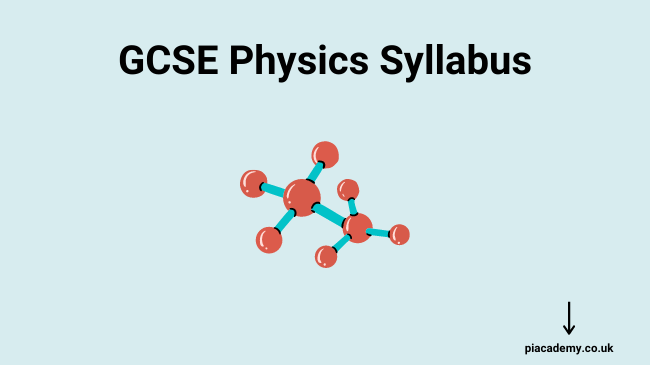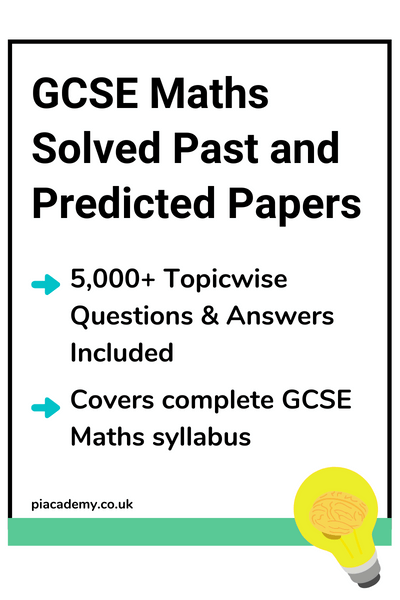The GCSE, with time, has become a landmark for students seeking excellence through higher studies in the UK. Nevertheless, GCSE exams are a way to ensure that students are skilled and hold the ample amount of knowledge required to attend college for higher studies. We at PiAcademy have tried to provide the requisite criteria of knowledge set out by GCSE for Physics in the form of GCSE Physics syllabus.
Introduction
Science holds the keys to a wide range of ideas, from the development of the universe to the inventions of new technologies. Science, thus, has an important place in education and moreover in higher education in the UK. GCSE exams are supposed to nurture the scientific temper in students seeking different branches of science as their area of interest in higher studies.
Here we are discussing the criteria of skill and knowledge described by GCSE for the Physics exam.
About
The GCSE Physics exam is split into 2 papers each for the foundation tier as well as the higher tier of the exam. GCSE physics syllabus is spread over the following topics:
- Energy
- Forces
- Forces and motion
- Waves in matter Light and electromagnetic waves
- Electricity
- Magnetism and electromagnetism
- Particle model of matter
- Atomic structure
- Space physics
Parents are advised to let the pupils get familiarised with the syllabus well before the preparation starts in the full swing.
GCSE Physics syllabus topics include:-
1. Energy
Energy changes in a system, and in the ways energy is stored before and after such changes
- Calculate the amounts of energy associated with a moving body.
- Describe the changes in energy by heating, by work done by forces and by work done when a current flows
- Explain, the definition of power as the rate at which energy is transferred • Describe all the changes involved in energy when an object is projected upwards or up a slope, a moving object hitting an obstacle, an object being accelerated by a constant force, a vehicle slowing down, bringing water to a boil in an electric kettle.
- Describe, with examples, the relationship between the power ratings for domestic electrical appliances and the changes in stored energy when they are in use.
Conservation, dissipation and national and global energy sources
- Describe that there is no net change to the total energy of a closed system.
- Explain ways of reducing unwanted energy transfer e.g. through lubrication, thermal insulation and describe the effects, on the rate of cooling of a building, of thickness and thermal conductivity of its walls
- Calculate energy efficiency for any energy transfer, and describe ways to increase efficiency
- Describe the main energy sources available for use on Earth (including fossil fuels, nuclear fuel, biofuel, wind, hydroelectricity, the tides and the Sun), compare the ways in which they are used and distinguish between renewable and nonrenewable sources
- Explain patterns and trends in the use of energy resources.
2. Forces
Forces and their interactions
- Recall the ways in which objects interact: by gravity, electrostatics, magnetism and describe how interactions between pairs of objects produce a force on each object; represent such forces as vectors
- Define weight, describe how it is measured and describe the relationship between the weight of that body and the gravitational field strength
- Describe examples of the forces acting on an isolated solid object or system
- Explain, with examples, that to stretch, bend or compress an object, more than one force has to be applied
- Describe the difference between elastic and inelastic distortions caused by stretching forces; calculate the work done in stretching.
- Use the relationship between work done, force, and distance moved along the line of action of the force and describe the energy transfer involved. Pressure and pressure differences in fluids
- Recall that the pressure in fluids causes a force normal to any surface, and use the relationship between the force, the pressure, and the area in contact.
- Describe a simple model of the Earth’s atmosphere and of atmospheric pressure, and explain why atmospheric pressure varies with height above the surface.
- Explain why pressure in a liquid varies with depth and density and how this leads to an upwards force on a partially submerged object.
- Describe examples in which forces cause rotation; define and calculate the moment of the force in such examples. • explain how levers and gears transmit the rotational effects of forces.


















































